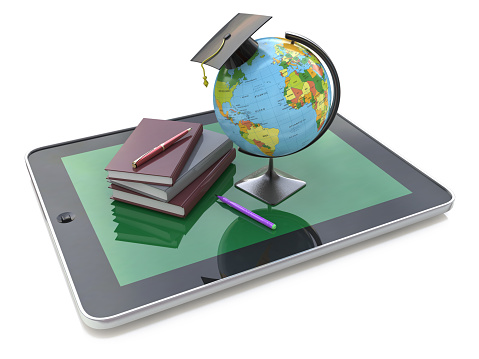Tablets aren’t just digital babysitters for young kids or fancy versions of ereaders. They offer real value as educational tools. Their versatility, portability, and ease-of-use make them an excellent conduit for learning. Below are seven benefits of using tablets in the classroom.
Seven Solid Benefits of Tablets in the Classroom
1. Portability
Lightweight, easy to carry, and durable if they have screen protectors and cases, the tablets can be picked up and taken on field trips, used in group projects, even taken home. A distinct advantage over desktops and easier to transport than laptops. Bonus: Students with unreliable or no internet at home can potentially be given devices that have broadband subscriptions.
2. Easy To Use
Even elderly parents and grandparents take to touchscreen technology pretty well thanks to the work of developers who’ve studied human behavior to put out the most intuitive devices possible. Elderly people who may have had trouble figuring out the mouse or who had to two-finger hunt-and-peck on keyboards have much less trouble learning to use voice commands or use their fingers to scroll through Instagram. So much easier for younger people whose brains are primed for new information already. Remember … these kids are the future, the ones who will be picking up the tech ball and running with it before you can say Instagram for eyeballs.
3. Great Apps Abound!
There are a TON of high-quality, low-cost educational apps out there. Many are even free. Check out Edshelf.com to see lots of great apps with reviews from teachers. You can build different “shelves” of apps that fit under a certain category. For instance, you could create a shelf where you save adaptability apps that are specifically designed for children on the autism spectrum. Cough Drop is an AAC app for people who have trouble speaking and could easily be downloaded to an iPad. Many other apps may not be specifically meant for differentiated instruction, but have options that make it easier to reach every student. The trick is in finding something that is easy to use but also worthwhile. Using Edshelf.com can help teachers discover the most effective tools because other teachers will post information about how they used the app, whether or not they had any trouble, and how effective it was at enhancing the lesson in a genuinely valuable way.
4. Digital Libraries At Your Fingertips!
No more heavy backpacks! No more waiting for college before being allowed to write in their textbooks!
With tablets (and other computers) students can use digital textbooks like Geography Alive! They’re not only lighter, in the long-term they are cheaper. Most tablets are pretty affordable, and digital textbooks are typically less expensive than their paper counterparts. They have the added bonus of interactive features, annotation, dyslexic-friendly font options, audio features (the textbook reads itself!), and study materials. Even if digital textbooks were only available on desktops, they seem a lot cooler than printed books. However, with a tablet, you can carry all of your textbooks, plus digital libraries in the form of apps like Hoopla and Libby. For this benefit, alone tablets look like a sweet deal.
5. Good Training For Real Life
Touchscreens are ubiquitous. Tablets are the only computing devices right now (apart from smartphones) that offer the user interface and experience that prepares students for the type of digital experiences they will have into their adulthood. They allow teachers an opportunity to demonstrate for students how to live in a digital age. This is perhaps the most important advantage of all. The reason? Because the fact of the matter is, short of an apocalyptic event that thrusts civilization back into the Stone Age, the technological advances will keep coming. Educators need to properly prepare students to know the differences between good and bad information, to keep themselves safe online, and to use these technologies in a responsible way. Students will learn netiquette at earlier ages.
6. Versatility
With the proper accessories, tablets can be used as a slate, artist’s canvas, worksheet, journal, handwriting sheet, whiteboard, camera, laptop, and more! Kids can go through a scavenger hunt on a field trip, edit video, or just revise their papers on the tablet using the extremely intuitive UI/UX that’s only getting better every day.
7. Nearly Instant Assessment
The answer to every ADHD kid’s prayers, and the balm for every secondary teacher’s overloaded arms! Students can take quizzes and tests, run lab simulators, and turn in homework online. No more messy papers, no more shuffling through stacks of grading. Grade papers and immediately switch screens to record the grades. How cool is that?
The Final Grade?
With the ease-of-use, intuitive design, and relatively low price point, these versatile little devices belong in the classroom. It’s even better than some of the sci-fi dreams of super-powered desktops. These portable gadgets fit even into the pudgy hands of preschoolers who, given proper guidance and limits, show more engagement and improved literacy skills when tablets are included in their lessons. Tablets will never replace real human interaction, nor should they, but used thoughtfully, they’re a great tool.
